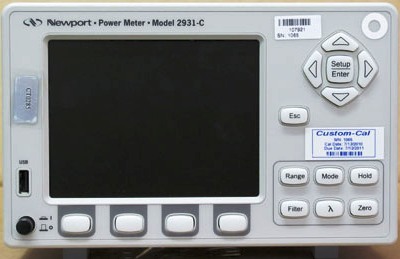
|
|
The Newport 2931-C 2-channel input optical meter is designed to provide a powerful combination of features to measure optical power and energy of near-monochromatic or monochromatic sources. The model 2931-C optical meter is compatible with all Newport detectors having a 15-pin D-sub type connectors. It is designed to provide continuous wave (CW) and pulsed source measurements that support the testing and production needs of free space beams and fiber optics based sources. The full color TFT 5.6” LCD renders excellent visibility both with the naked eye and laser goggles for single screen rendering of plotted and enumerate results. Measurements can be displayed in W, Amps, dBm, dB or relative units, either directly or as relative ratio measurements from present or stored values. Statistical capabilities include the computation of Min, Max, Max-Min, Mean and Standard Deviation. Additional features such as digital and analog filtering, and data storage of up to 250,000 readings per channel are also offered. Features. Compatibility with low-power, photodiode detectors (Si, Ge, InGaAs and GaN) and photo-multiplier tubes (PMT). Up to 20 kHz repetition rates for photodiode detectors with signal sampling rates of up to 250 kHz. Multiple measurement modes for power measurements: Single, Continuous and Peak-to-Peak. Software suite, including LabVIEW drivers, .NET programming capability and high-speed data transfer utility. 250,000 of internal data point storage and external USB flash-memory compatibility. Triggering features to synchronize measurements with external events. USB and RS-232 Interfaces.
|